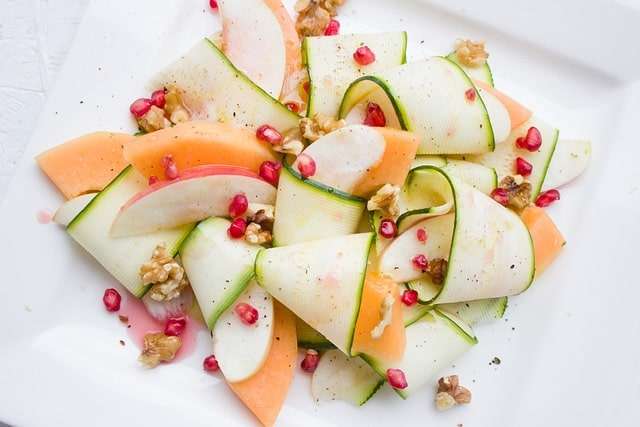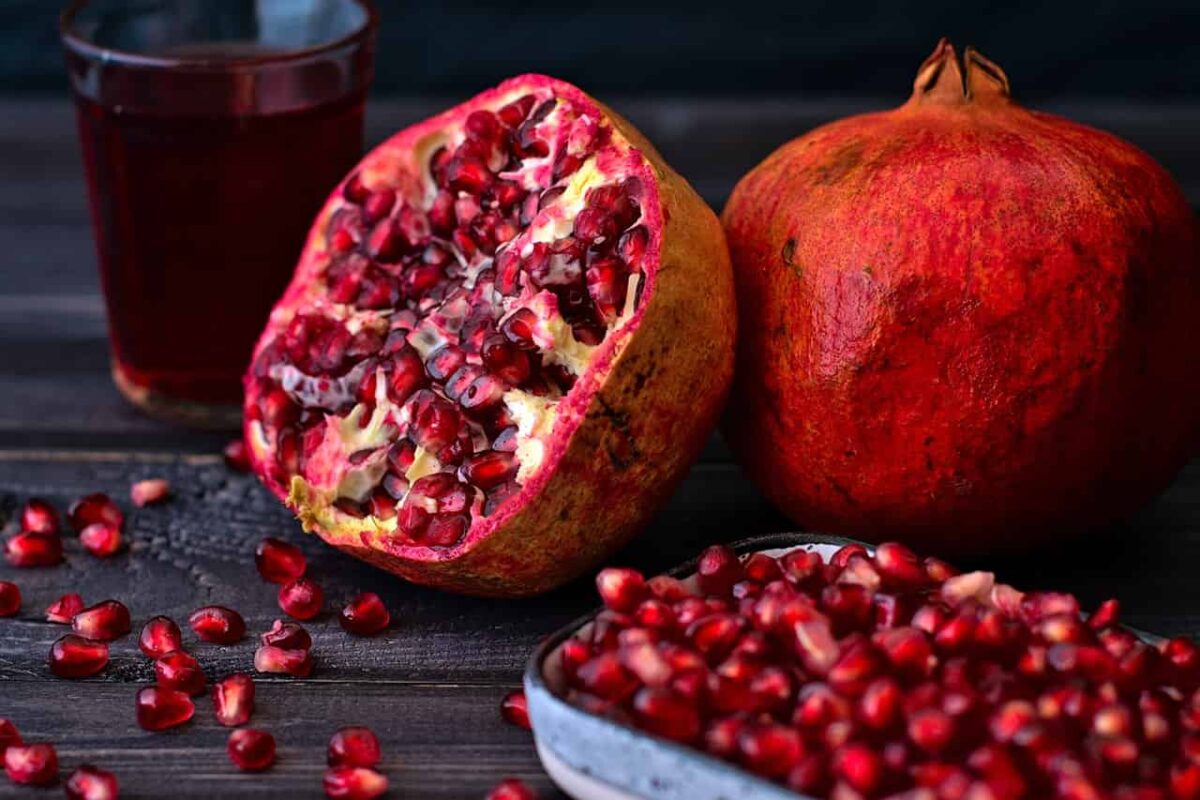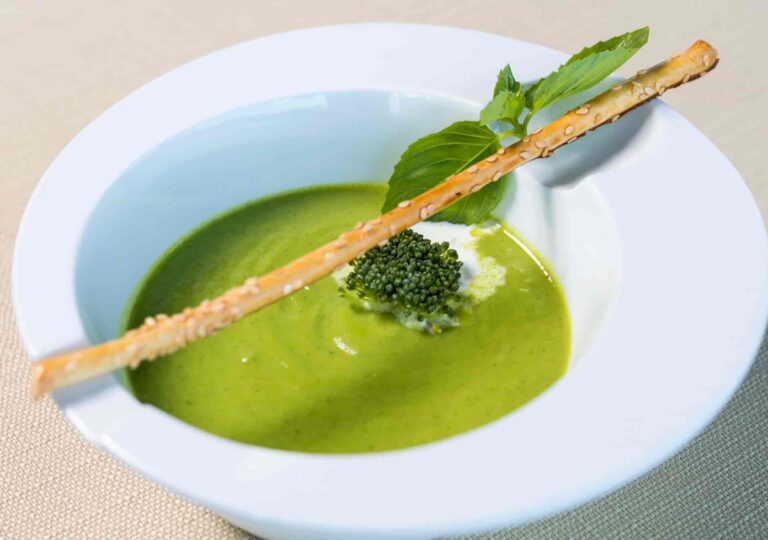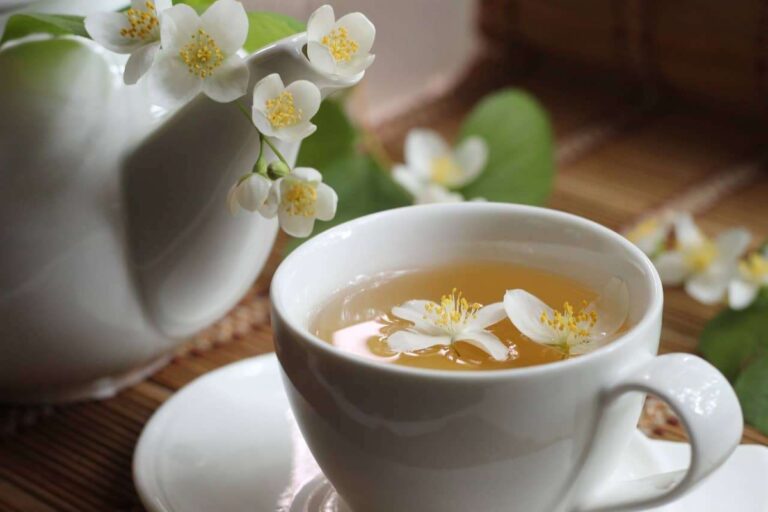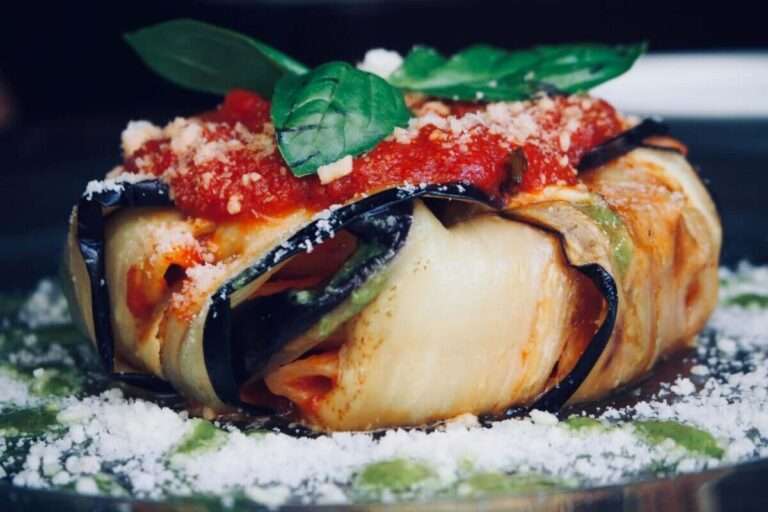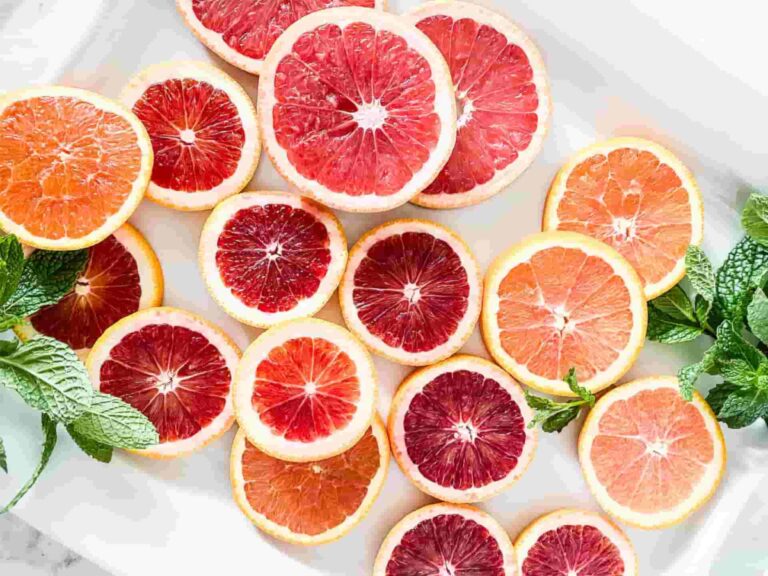Pomegranate 101-kitchen insights and benefits
Did you know that pomegranates come in more than just the red colour that is often associated with them?
- The outside of most pomegranates is tough and leathery, but the inside is comprised of clusters of fruit sacks that are juicy, delicious, and have thin skins. There are kinds that are white, yellow, and pink; nevertheless, when they are mature, the seed sacks are often still red in colour. On the other hand, the seeds of certain black and purple types are similarly dark in colour.
- According to Greek mythology, anybody who consumed the fruit that was found in the underworld would be condemned to remain there for all of eternity. This would have been the case with Persephone, had she been more hungry. During the holiday season, you may find pomegranates on the tables of many Greek and Jewish families. It seems like an unnecessary mess to smash a pomegranate on the ground for good luck during weddings and New Year’s celebrations in Greece, but they do it nevertheless.
- The fruit originally came from the Middle East, but it can now be found all the way around the world, including in the Mediterranean, Asia, India, Eastern Europe, Africa, Arizona, and California. In California, where pomegranates are held in the same regard as avocados and apparently none of the state’s residents could survive without either, several novel, sweeter, and better producing varieties have been developed.
- In point of fact, the apple from Granada has nothing to do with the origin of the French word for pomegranate, which is “pomme grenade.” The second component of the name, “grntum,” originates from the Latin word for “seeded.”
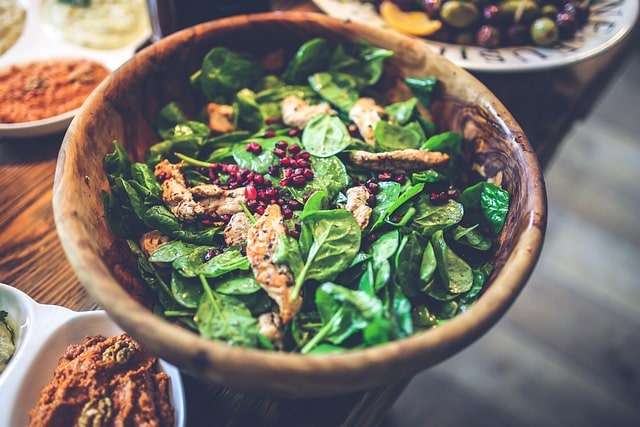
Pomegranate nutrition values and health benefits
- Pomegranate, when consumed in its natural, unprocessed state, is an excellent source of several vitamins and minerals. One fruit of this size contains 16 mg of vitamin C, which corresponds to about 18 percent of the daily amount suggested for a diet consisting of 2,000 calories. In addition, a pomegranate of the same size provides 28% of the daily vitamin K need for women and 21% of the requirement for males. Vitamin K is a fat-soluble vitamin that plays a role in the body’s natural processes for clotting blood.
- Pomegranate is a fruit that is low in calories, extremely low in fat, and high in nutritional density. It also contains a significant quantity of fibre. Moreover, the fruit is a very good source of the nutrients potassium, magnesium, vitamin C, and zinc.
- Pomegranates give loads of vitamin C (L-ascorbic acid). This vitamin is critical for maintaining healthy bone formation as well as cartilage, muscle, and blood vessel function. Moreover, it improves the healing of wounds and assists in the absorption of iron. Since our bodies are unable to produce vitamin C on their own, getting it via food is the only way to get it.
- When you ingest pomegranate arils, you will be providing your body with a beneficial dose of fibre (not juice). The majority of people in the world do not consume sufficient amounts of fibre on a daily basis. Increased satiety, improved digestive health, and even a reduction in blood cholesterol are all benefits of a diet high in fibre. Moreover, it helps to reduce the absorption of sugar, which prevents an increase in your blood glucose level after eating.
- According to the findings of a research review that examined the impact of pomegranate juice on blood pressure, drinking approximately one cup of the juice can help lower systolic and diastolic blood pressure, which may be of benefit to people who have hypertension as well as people who are at risk for hypertension and cardiovascular disease.
- Pomegranate juice contains antioxidants that may assist muscles become more robust and recuperate more quickly after being used. They also have the potential to increase performance when engaging in physical activity.
- Allergic reactions to pomegranates are not very frequent, but they may happen. Itching, swelling, a runny nose, and trouble breathing are some of the symptoms that may be experienced. Consult an allergist in order to get a diagnosis if you have any reason to believe that you may be allergic to pomegranate.
- Pomegranate juice may have an interaction with some drugs used to treat high cholesterol. Because the effects that grapefruit juice and pomegranate juice have on the body are comparable, it is possible that these and other drugs that are known to interact with grapefruit juice may also interact with the juice that comes from pomegranates. In order to prevent any adverse effects from the medicine you are taking, you should consult with your doctor before adding fruit to your diet.
- Pomegranate’s high vitamin K content makes it potentially dangerous when used with the blood-thinning medication Coumadin (warfarin). Nevertheless, the recommended amounts of vitamin K in one’s diet might vary, therefore it is important to review one’s diet with their physician if they are taking this medication.
100g of pomegranate has 83 calories (347kj), 1.7g protein, 1.2g fat, and 19g carbs, including 4g fibre.

How to store pomegranate and how to buy them
- After they have reached their full maturity, pomegranates are ready to be picked. Because of this, you will not have to second-guess yourself about whether or not you should let them mature at room temperature, as is often the case when dealing with mango. When it comes to storing whole pomegranates, you should keep them out of direct sunlight and in a location that is cool, dry, and has enough of ventilation. The refrigerator is the most ideal location since it fulfils all of those needs.
- Pomegranate seeds have to be stored in the refrigerator in order to avoid spoiling. Place them in a container that is suitable for food and is preferably sealed. This last step is necessary to ensure that the pomegranate arils do not absorb any of the odours that may be present in the refrigerator.
- When stored in the refrigerator, whole pomegranates have a shelf life of even up to two months. Naturally, if they have already been left out at room temperature in the vegetable area of the grocery store for a couple of days, there is a good chance that they will not keep their quality for that long. If you want the greatest results, you should not store pomegranates in the refrigerator for more than a month at a time.
- If you leave the pomegranates out on the counter rather than storing them in the refrigerator (for example, your refrigerator is full, as is often the case with mine), they should be OK for a week or two. Once again, for the sake of your own safety, you should strive to remain on the lower end of the range.
- Freezing pomegranate seeds is a quick and easy process that only takes a few minutes to complete. The most time-consuming and labour intensive component of the procedure is the removal of the seeds from the fruit.
- Prepare for pre-freezing, take a baking sheet and line it with wax paper, parchment paper, or a silicone mat. One that does not have any lining should also work, although it will be more difficult to extract the frozen seeds from it.
- This baking sheet should have a single layer of the seeds spread out on it.
- Place the tray in the freezer and let it to remain there until the seeds have completely frozen solid. Don’t leaving them for more than two hours, although I do not believe the specific amount of time is that much of a consideration in this case. If you leave the seeds in the freezer for five hours or overnight, you should not have to worry about anything going wrong.
- Place the frozen seeds in a container or freezer bag and place them in the freezer. You are free to label the bag with anything you desire.
- Pomegranate seeds that have been thawed out may leak some water. Defrost them first and then pat them dry if you want to use them to garnish a cake.
- Below is a list of the most common signs that pomegranates have gone bad, in no particular order:
- Weight. The weight of the fruit should be proportional to its size. If it seems to have lost some of its weight, it is most likely dried out. But, it is still best to check by opening it just in case.
- Dark or soft patches. Some of the smaller ones are OK, provided that they are not mushy or sunken in the middle. If this is the case, you will need to cut the fruit open and evaluate the condition. The pomegranate is beyond its peak when it has several large sunken places.
- The seeds of a pomegranate are often a deep crimson colour. In principle, you would be able to consume the seeds that had gone brown or black if just part of them changed colour. I usually simply toss the whole thing unless there are just a few brown ones and the rest are OK. In that case, I may save the rest of it.

Cooking techniques, secrets, and tips from the kitchen
- When you have cut the pomegranate into segments, the following step is to extract the seeds from the membranes that surround them. There are three different approaches to take here:
- While holding a pomegranate segment, it is best to do so with the seed side facing down. You should be holding the seeds in the palm of your hand. With the other hand, you should be holding a big spoon, and you should begin aggressively tapping the husk. It need to get to the point where the seeds are dropping into your fingers. To prevent the seeds from spreading all over the chopping surface, do this step while standing over a bowl or other suitable container. Continue the process until none of the seeds remain.
- Another method for removing the seeds is to soak the orange segments in water for five to ten minutes before removing them. The membranes and the pith will become easier to work with if you use cold water. The next step is to place the pomegranate in the water and use your hands to loosen the seeds while the fruit is immersed. Since the seeds will fall to the bottom of the bowl, you may take them one at a time. On the other hand, the membranes and pith will float to the top of the bowl. When you have extracted all of the seeds, you should drain the water.
- The third alternative is to just remove the seeds from the segmented fruit. This method is much simpler. When you have turned each segment out, hold it by its edges and use your thumbs to press the centre of each piece forward while still holding it. In this method, the majority of the seeds will be forced out. When you have finished doing so over a dish, use your fingers to remove any seeds that are still stuck in the membrane. Repeat the same procedures for the other parts of the section.
- Molasses are thick syrups with a dark grapey colour that are made by reducing fresh pomegranate juice. This process amplifies the inherent flavours of the fruit. Pomegranate molasses have this dark grapey colour. As is the case with a great number of Iranian ingredients, it is most often used to provide a fruity flavour to savoury foods. Pomegranate molasses has a tangy, almost citric bite, which means that the flavours it imparts to dishes are more akin to the sweet-sour quality of preserved lemons or even tamarind, rather than the fruity-sweet quality of sultanas and prunes. This gives pomegranate molasses an edge over other types of sweeteners, such as sultanas and prunes.
- There are just a few short months of the year when fresh French pomegranates are available, and this period generally coincides with the winter vacations. This provides you with a very little window of opportunity during which you may produce the freshest grenadine syrup of the year, and it is well worth the work required to do so. To commemorate this momentous achievement, the Sweet Adeline might serve as a token of appreciation for your hard work extracting all of those delectable and juicy seeds. It is best to mix it together shortly before the fresh pomegranate juice is sweetened and reduced to a syrup since it produces the best results. To make a cup of blended black tea with citrus and spice, just remove a couple of ounces from the top of the liquid and steep it.
- This recipe for pomegranate ginger sauce is quite adaptable and provides a fantastic complement to roasted chicken and fish meals that are prepared on the grill. This spicy sauce can be made out of pantry essentials in a matter of minutes thanks to the combination of fiery ginger, tannic pomegranate juice, and a dash of acidic apple cider vinegar. Pomegranate juice, sugar, ginger, and black pepper should be combined in a saucepan and then brought to a boil. There should be around a two-thirds reduction in volume of the pomegranate ginger sauce after it has simmered uncovered for ten minutes at a temperature that is somewhat lower than the original heat setting.
- The flavour of pomegranate goes well with a wide range of other flavours, such as apple, cardamom, cinnamon, citrus, cucumber, ginger, mint, and several types of tropical fruit, to name just a few. When it comes to mixing pomegranate-based cocktails, you will discover that port, tequila, vodka, and both red and white wines are some of the most complementary alcoholic beverages to use.

History of pomegranate from the beginning until today
- Pomegranates have been cultivated in many different parts of the world, including South Asia, the Mediterranean region, and the Middle East, for many millennia. It is probable that pomegranate trees were domesticated as early as the fifth millennium BC, making them one of the oldest fruit trees to be cultivated in the eastern Mediterranean region. Pomegranates were one of the earliest fruit plants to be cultivated.
- At the tomb of Djehuty, the butler of Queen Hatshepsut, in Egypt, a large, dried pomegranate was found. Pomegranates have been referenced in Mesopotamian cuneiform writings reaching back to the middle of the third millennium BCE and going onward.
- Pomegranate remains that had been submerged in water were found at the site of the shipwreck known as the Uluburun, which occurred off the coast of Turkey in the 14th century BC. Pomegranates were discovered on board the ship with other luxury commodities such as perfume, ivory, and gold jewellery, which is evidence that pomegranates were regarded as a valuable commodity during that time period.
- Whether it was brought in by sea merchants or first spread throughout the length of the Silk Road, it is also commonly grown in southern China and Southeast Asia. This might be due to the fact that both regions are located in Southeast Asia. Pomegranates grown in Kandahar are renowned across all of Afghanistan for their exceptional quality.
- Although though the pomegranate is not indigenous to Korea or Japan, it is widely farmed in both countries, and a great number of cultivars have been developed from the original species. It is a well-liked choice for use as a bonsai tree due to the unique appearance of the twisted bark that certain older specimens of the species may produce.
- Pomegranate sauce is used in Turkey in a variety of ways, including as a salad dressing, as a marinade for meat, and even on its own as a pleasant drink. In addition to its usage in salads, pomegranate seeds are often sprinkled on top of desserts like gullac, which is a traditional Turkish treat.
